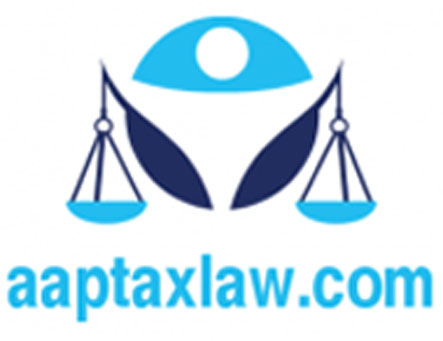
1. Initially drafted by Sh. B. N. Rau in his memorandum of May 30, 1947 which was later reproduced in the Draft of October 7, 1947.
2. Preamble is the soul of the Constitution, Direction, Purpose, Objectives.
3. Preamble is part of the Constitution of India.
WE, THE PEOPLE OF INDIA, having solemnly resolved to constitute India
into a SOVEREIGN, SOCIALIST, SECULAR DEMOCRATIC REPUBLIC and to secure to
all its citizens:
JUSTICE, social, economic and political;
LIBERTY of thought, expression, belief, faith and worship;
EQUALITY of status and of opportunity; and to promote among them all
FRATERNITY assuring the dignity of the individual and the unity and
integrity of the Nation;
IN OUR CONSTITUENT ASSEMBLY this twenty-sixth day of November, 1949,do
HEREBY ADOPT, ENACT AND GIVE TO OURSELVES THIS CONSTITUTION.
4. Nature of Indian states - Sovereign Socialist Secular Democratic Republic
5. Objectives of Constitution - JUSTICE, LIBERTY, EQUALITY, FRATERNITY
6. Date of adoption of Constitution - 26th November 1949
7. Source of authority - People of India
8. "The Preamble to our constitution expresses what we had thought or dreamt so long."
-Alladi Krishnaswami Iyer - Member of the Constituent Assemble of India
9. "Preamble is the horoscope of Sovereign Democratic Republic."
- K M Munshi, Member of Drafting Committee of the Constituent Assembly
10. "Preamble is the most precious part of the Constitution. It is the Sour of the Constitution. It is a key to the constitution. It is a Jewel set in the Constitution. It is a proper yardstick which one can measure the worth of the Constitution."
- Pandit Thakur Das Bhargava - Member of Constituent Assembly.
11. Preamble is the Key Note to the Constitution"
- Sire Earnest Barker
12. Jewel to Constitution
Case Laws
1. Berubari Union Vs Unknown AIR 1960 SC 845, 1960 3 SCR 250
- The Supreme Court said that preamble shows general purposes behind several provisions in the Constitution.
- If any Article has double meaning, Preamble will be final say.
- The Supreme Court said that the Preamble is not a part of the Constitution
2. Kesavananda Bharati vs State Of Kerala And Anr - (1973) 4 SCC 225; AIR 1973 SC 1461
1967 Golaknath Case
- Government Cannot Amend Fundamental Rights
- Definition of Article 13 and Article 368
24th Amendment, 1971
Government of India can amend any part of the Constitution
25th Amendment, 1971
1st Amendment stopped. Article 31, right to property.
Government can acquire any property and can decide the price
Kesavananda Bharti - Swami M M Sri K Bharti, Senior head of Edneer Mutt
- 2 States land reforms act by state of Kerala
- Kerala Government can manage religious property.
- This violated Article 26
Nani Palkhivala convinced Kesavananda Bharti to file an appeal against High Court Order.
-13 Judges -> 7:6 in 1973
The Supreme Court said "Parliament can amend any part of the Constitution".
39th Amendment and 41st Amendment
- PM's and Ex-PMs to be legally immune
Indira Gandhi made Justice A N Ray as Chief Justice of India. He reopened the case. However, Nani Palkhivala convinced the court that it cannot be reopened as nobody has filed a review petition.
3. LIC of India Vs Consumer education and Research Centre
- Preamble is an integral part of the Constitution.
Preamble is non-Justiciable i.e. provisions are not enforceable Court.
Preamble has been amended only once. 42nd Amendment, 1976 which added Socialist, Secular and Integrity.
"Preamble is ID Card of the Constitution" - Nani Palkhivala
American Constitution was the first to have a Preamble
S.R. Bommai vs Union Of India on 11 March, 1994 Citations: 1994 AIR 1918, 1994 SCC (3)
Note for LLB Entrance Examinations
Muslim Law
Nikah- Muslim Marriage Conditions
Hindu Law
Hindu Adoption and Maintenance Act 1956
Hindu Minority and Guardianship Act 1956
Hindu Succession Act 1956 Notes
Special Marriage Act 1954 Notes
Historic Development of Law in India
Constitution of India
Preamble of the Constitution of India
Fundamental Rights in Constitution of India
Article 32 Remedies for enforcement of rights
Directive Principles of State Policy
Executive, Judiciary, President, VP
Extent of Powers of Union, Supreme Court etc
State Judiciary, High Court, Lower Courts
Parliament, Council of states, house of people
Introduction and passing bills, budget etc
State Legislature, Composition, duration
Bills, Money Bill, Finance Bill, Proceedings
Emergency - National, State, Financial
EC, PSC, Finance, NCSC, NCST, NCBC
Non Constitutional Bodies, Niti ayog, NHRC etc
Panchayat, Municipality, Cooperative Societies
Important amendments to the Constitution
PIL - Public Interest Litigation, Judicial Review
Doctrine of Basic Structure in Constitution
Constitution of India Schedules and Provisions
Criminal Laws
Theft, Extortion, Robbery, Cheating etc
Tress Pass, Negligence, Nuisance, Defamation
Liability - Vicarious, Strict, Absolute Liability
Crime, Stages, Elements, General Exceptions
IPC Chapter, Provisions and Sections
Crime, origin, Elements, Stages Exceptions
Indian Penal Code Sections and Description
Other Laws, International bodies etc
Law of Torts - Civil Tort, Criminal Tort
Contract Essentials valid, void, voidable
United Nations, UNGA, UNSC, ICJ, UN ECOSOC